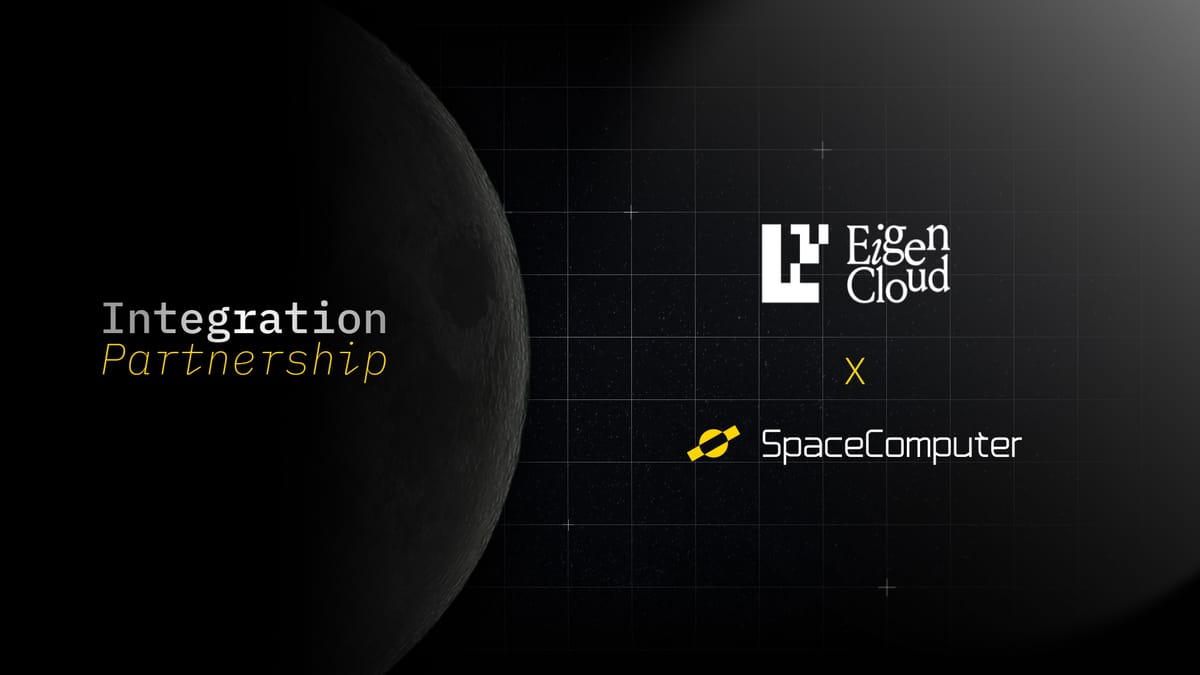SpaceComputer Partners with EigenCloud: Data Availability for the Orbital World Computer

SpaceComputer has entered a strategic partnership with EigenCloud, selecting EigenDA to serve as its Data Availability (DA) layer, This marks a major milestone in the roadmap toward a physically verifiable, space-based compute network. This integration will underpin the development of SpaceComputer’s two-tier L1/L2 stack, ensuring high-throughput, high-security, and high-quality data availability for applications and services built on the platform.
EigenCloud's restaking-powered DA network will enable SpaceComputer's Earth-based Uncelestial L2 to efficiently publish and retrieve data from its Celestial L1 in orbit. In other words, this integration enables a cost-effective and verifiable bridge between Earth and orbit, forming the data backbone for a new generation of space-native trust primitives. To learn more about SpaceComputer’s vision and architecture, read the Blue Paper.
"EigenDA perfectly fits our intended architecture,” writes SpaceComputer co-founder Filip Rezabek. “It provides the required throughput, latency, and reliability needed for smooth usability and extension for space-native orchestration layer.”
This partnership directly aligns with the transition from Ignition → Void Traverse phases outlined in the 𝕤𝕡/𝕒𝕔𝕔 roadmap. SpaceComputer will move from foundational security services like cTRNG toward L1 architecture, ZK-based proof systems, and L2 data availability integrations. As the project advances toward the Lunar Slingshot phase in 2026, EigenCloud will become a cornerstone of the stack, anchoring the data layer for both Earth-based execution and orbital consensus.
Together, SpaceComputer and EigenCloud are laying the groundwork for a new era of verifiable, permissionless compute that spans from Earth to orbit, extending the reach of Ethereum’s ecosystem into space.
For more information, visit spacecomputer.io and eigencloud.xyz
→ Join the SpaceComputer community on Telegram
